Fluffy oak: features and use

Fluffy oak directly belongs to the beech family. In nature, the place of its growth is considered to be Southern Europe, as well as Asia and the Crimea, since these regions are distinguished by their temperate climate. The presented plant feels comfortable in forests and protected areas, it is actively used in landscape design.
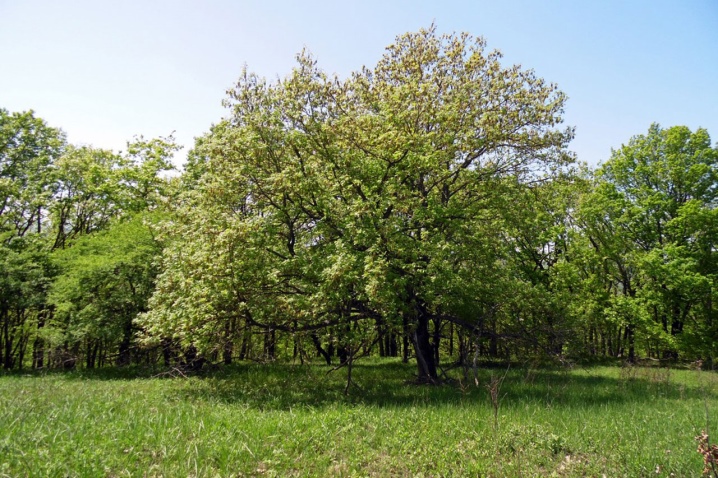
Description
Unlike its closest relatives, this tree does not have gigantic dimensions. Its maximum height does not exceed 15 meters, and in some cases it can acquire a bush structure. A distinctive feature of the plant is a non-linear trunk, which is characterized by wavy curves. The spreading branches of such an oak form a crown that shelters the nearby area from the sun.
Fluffy oak grows relatively slowly, for this reason landscape designers use it for the original design of parks and the creation of shaded areas. Young shoots with buds and new leaves are distinguished by a fluffy coating, which is reflected in the name of the plant. When the foliage fully grows back, it loses its downy coating, and fruits in the form of acorns are formed on the branches, half hidden in a plyus.
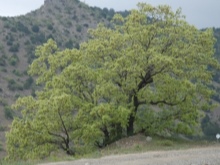
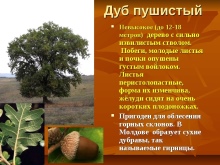
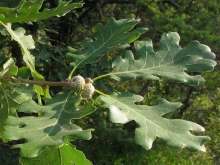
Like other representatives of this species of trees, the fluffy oak belongs to long-livers and can develop up to 1000 years. When in favorable conditions, it acquires a mushroom shape, because all the shoots of the crown are oriented downward, and the foliage forms a kind of blade from each individual branch. Young shoots and leaves of the plant attract herbivores with their nutritional qualities, which devour all the lower branches. In this case, the Crimean oak can form into a huge bush.
The tree has a powerful root system that has a common stem with multiple horizontal branches that follow the contours of the crown. Such a support is able to withstand even strong gusts of wind. The root system goes deep into the soil, finding water sources even in arid areas. This feature allows the fluffy oak to survive the summer heat and long-term absence of precipitation.
Thin root segments of the plant form a tandem with myceliums, which explains the abundant growth of fungal communities in oak groves.
Thus, these trees interact with the ecosystem and significantly strengthen the soil, which allows the conservation of green areas even on rocky mountain slopes.
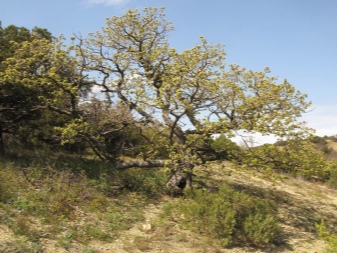
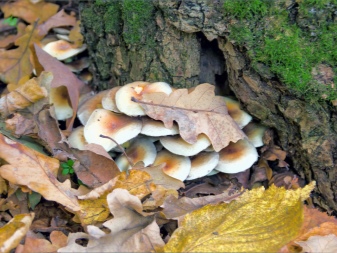
Where does it grow?
Fluffy oak prefers good lighting and warm climates. It tolerates dry periods well, which allows it to feel comfortable on the mountain slopes of the southern regions. The plant is well assimilated in clay and stony soils containing lime deposits. This representative of the flora is able to form woodlands, rising to a height of up to 600 m above sea level.
Dry mountainous soils are perfect for the formation of oak forests, due to which a fluffy oak at one time grew in great numbers in the Crimea. However, with the advent of the 19th century, industry began to develop, and oak forests were almost completely cut down. Now only young trees can be found here, the oldest of which are no more than 100 years old.
You can enjoy the beauty of age-old oaks only on the territory of the Alushta Nature Reserve, where primeval groves have been preserved.
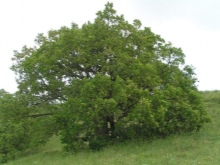

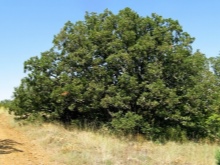
Scope of application
A fluffy oak was described in ancient Slavic mythology, where it was called "tree", which meant a mighty and voluminous tree. This designation served as the name for the ethnic group "Drevlyans", who considered this tree sacred and protected it in every possible way. However, after a while, the material values of people changed dramatically and with the development of industry, other valuable qualities of wood were taken into account.
The wood obtained from oak is distinguished not only by its special strength and resistance to weathering, but also by its original aesthetic characteristics. For this reason, with the arrival of the 19th century, most of the Crimean oak forests were cut down for industrial and consumer needs. They served as the basis for the construction of railways, floors for multi-storey buildings and materials for the manufacture of furniture.
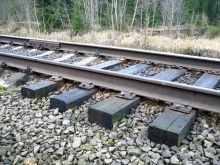

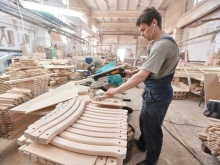
The lion's share of the age-old reserves of oak forest was used to create the Black Sea Fleet, because the construction of one battleship required about 4,000 adult trees. Durable timber served both as a skin for warships and as a material for the manufacture of the skeleton and suspension mechanisms. In addition, the oak forest was excellent for the construction of bridges and defensive fortifications.
The foliage, young shoots and bark of the plant are used as raw materials in the national economy. These resources are suitable for livestock feed or are used as fertilizer for fruit trees.
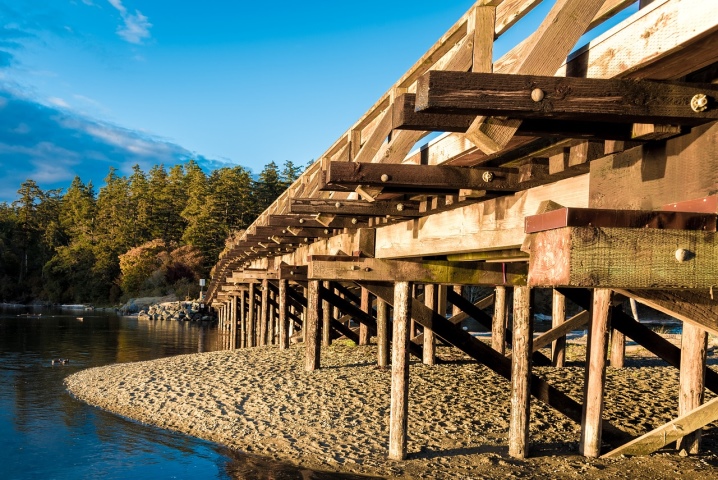



































































The comment was sent successfully.